Imagine opening your front door and being greeted by 150 pounds of pure love, floppy ears, and slobbery kisses. If that sounds like heaven, you’re probably torn between two of the gentlest giants in the dog world: the Newfoundland and the Saint Bernard.
Both breeds are known for their massive size, heart-melting eyes, and calm, affectionate personalities. But while they may seem similar on the surface, these dogs have distinct differences when it comes to temperament, grooming, health, and lifestyle compatibility.
Whether you live in the snowy mountains or a quiet suburb, choosing between a Newfie and a Saint Bernard isn’t just about size—it’s about finding the right match for your family’s energy, routine, and space.
We’ll break down the traits, strengths, and quirks of each breed so you can decide which furry giant is the right fit for your heart and home.
Newfoundland vs. Saint Bernard
Size Comparison
Let’s be honest — if you’re looking for a compact lapdog, you’ve taken a very wrong turn. Both the Newfoundland and Saint Bernard come in XXL.
Newfoundland:
The breed originated in Newfoundland, Canada, where these giant dogs worked closely with fishermen and were renowned for their skills in water rescues, says PetMD. Imagine a bear, but cuddlier, fluffier, and with webbed feet. Yup — webbed feet. The Newfoundland was practically made for swimming, and their body screams “water rescue superhero.”
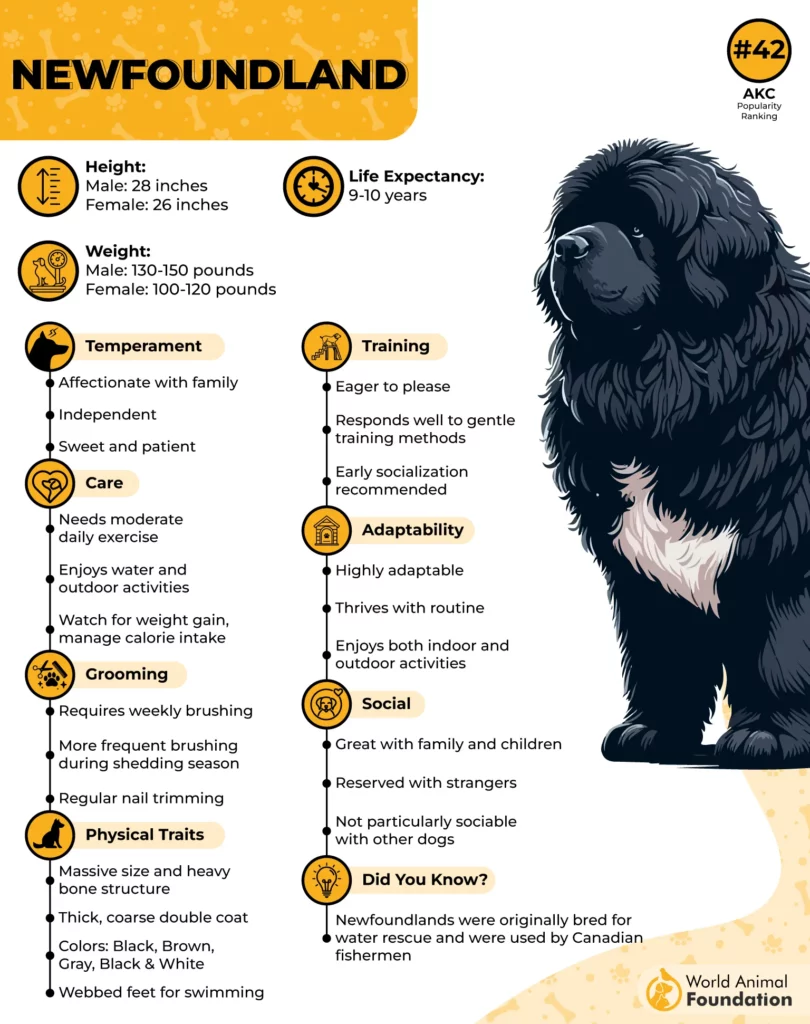
Height: 26–28 inches (males), 24–26 inches (females)
Weight: 100–150 lbs (sometimes even more, if they’ve discovered snacks)
Build: Big-boned, strong, and surprisingly graceful for a dog the size of a small sofa
Signature Look: Massive head, soulful eyes, powerful chest, and a thick, fluffy tail — perfect for sweeping your coffee table clean in one wag
Bonus Feature: Webbed feet! They’re Olympic-level swimmers and often called the “lifeguards of the dog world.” Just add water.
Saint Bernard:
The St. Bernard is a large working dog that originated in Switzerland. Historically, these giant breed dogs were employed to locate and rescue lost or injured travelers in the snowy Alps, as noted by WebMD. The Saint Bernard looks like a walking teddy bear wearing a wise old monk’s expression. Originally bred as rescue dogs to rescue travelers in the snowy Swiss Alps, they’re pure muscle wrapped in charm.
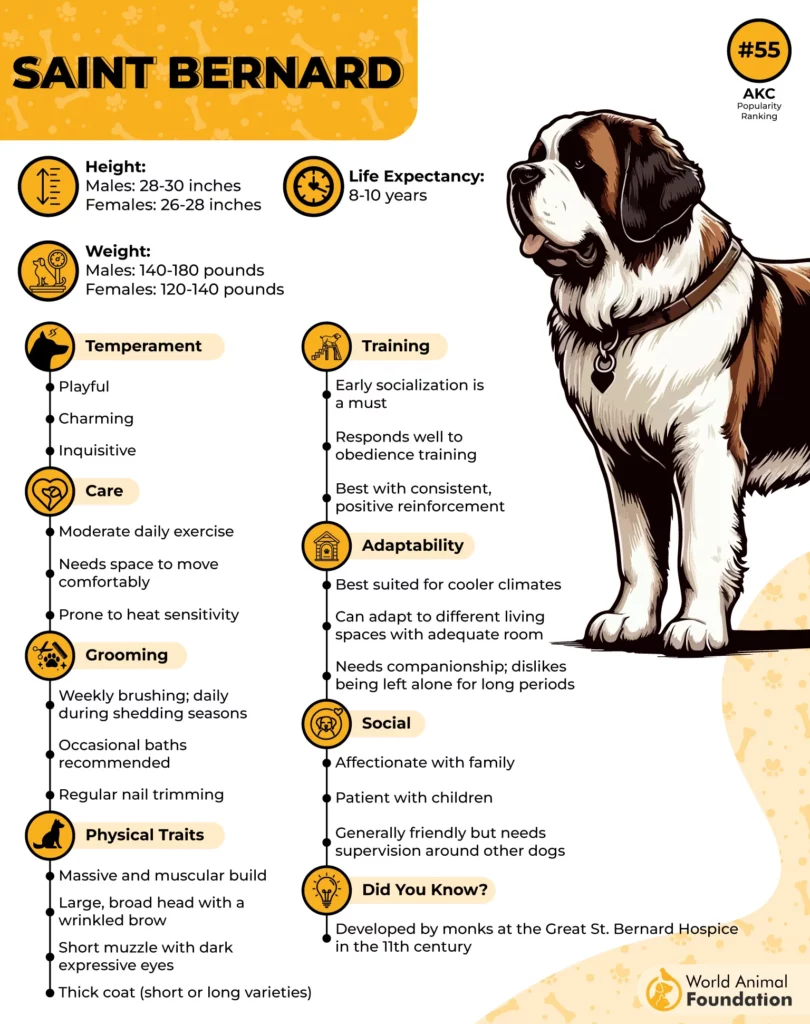
Height: 28–30 inches (males), 26–28 inches (females)
Weight: 120–180 lbs (yes, your Saint might outweigh you)
Build: Sturdy, broad, with a barrel chest and jowls that jiggle with every loving shake of the head
Signature Look: Big dome head, gentle eyes, and a jowly face that says, “Yes, I slobbered on the couch — and I’d do it again.”
Bonus Feature: Legendary Alpine hero status. While modern Saints may not carry brandy barrels around their necks anymore, the myth still lives on.
Coat and Hair Type
Don’t be fooled — those glorious coats come with maintenance. If you’ve got allergies or a deep attachment to a fur-free wardrobe… this might be your villain origin story.
Newfoundland:
Newfies are like fluffy marine mammals in disguise — their thick, water-resistant double coat, made for diving into icy waters to save the day.
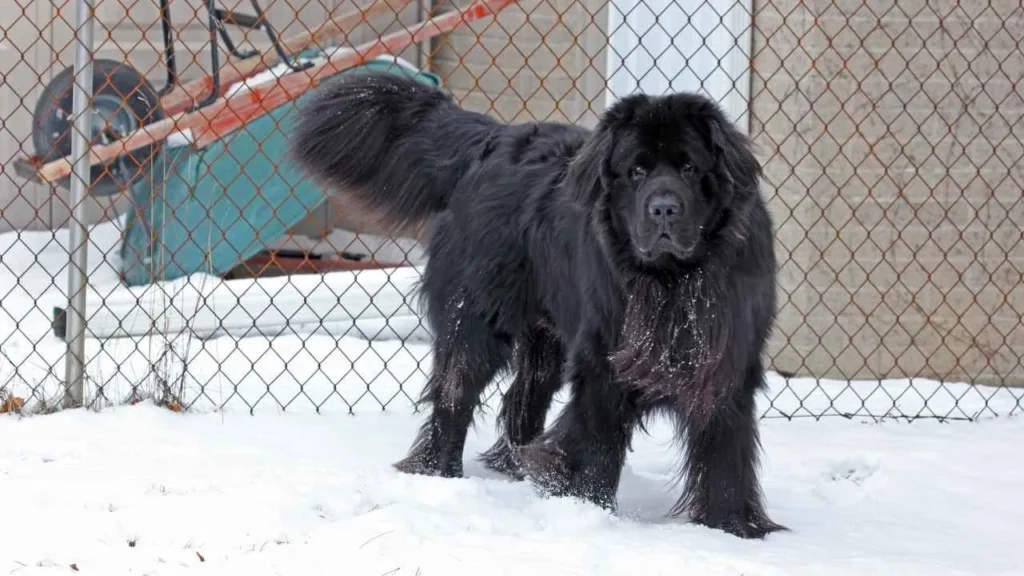
Coat Type: Double coat – coarse outer layer and soft, insulating undercoat. According to Wikipedia, in the Dominion of Newfoundland, prior to its confederation with Canada, only black and Landseer (white-and-black) colored dogs were recognized as true representatives of the breed.
Hair Texture: Thick, slightly oily (that’s the water resistance at work), and straight or wavy
Shedding: Heavy, especially in spring and fall — prepare for tumble-fur
Grooming Needs: Brushing several times a week (or daily if you’re battling “floof season”)
Colors: Black, brown, gray, or Landseer (white with black patches — fancy and fabulous)

Pro Tip: Don’t wear black pants around a Newfoundland… unless you want them accessorized with fur sprinkles.
Saint Bernard:
Saints come in two fabulous coat versions: short-haired (smooth) and long-haired (rough). Either way, you’re getting lots of dog and lots of coat.
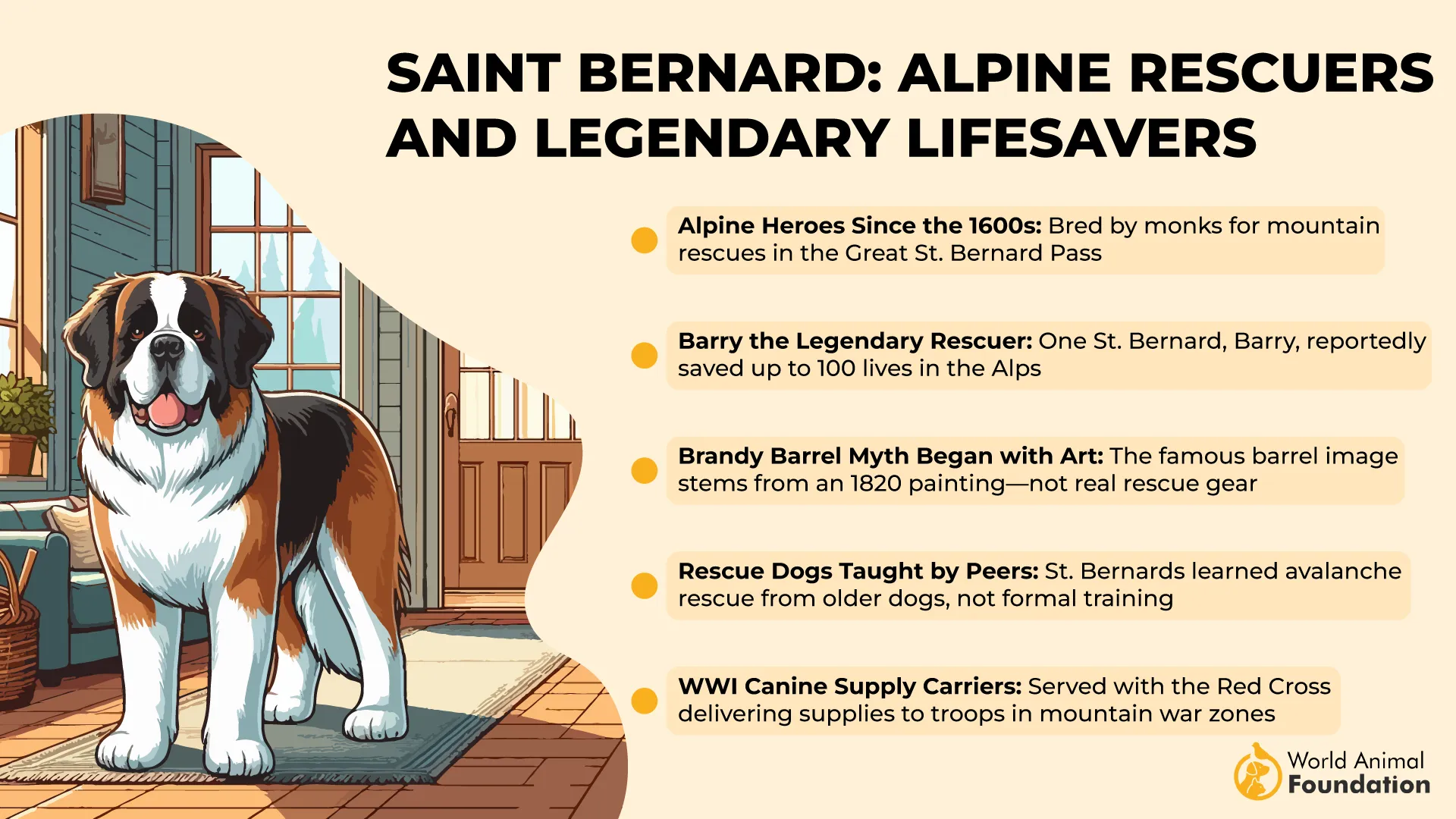
Coat Type: Double coat – short and dense in smooth-coats; medium to long and slightly wavy in rough-coats
Hair Texture: Soft, thick, and oh-so-shed-prone
Shedding: Also heavy, year-round, with seasonal flare-ups that could fill an entire vacuum bag
Grooming Needs: Weekly brushing for smooth coats, 2–3 times weekly for rough coats
Colors: White with red, orange, or brindle markings; often with that iconic “mask” across the eyes
Fun Fact: That slobber isn’t just a side effect — it’s a lifestyle. Keep a towel handy. Or three.
Temperament Traits
Let’s dive into the big-hearted world of two of the most lovable giants in the dog kingdom: the Newfoundland dog and the Saint Bernard. So, grab your dog treats, prepare your floors for a bit of drool, and let’s talk temperament—because these big fluffers have big feelings.
Newfoundland:
If the Newfoundland dogs were a person, they’d be the calm, strong-silent-type best friend who always carries extra snacks and is ready to dive into a river to save you, even if you’re just taking a relaxing float.
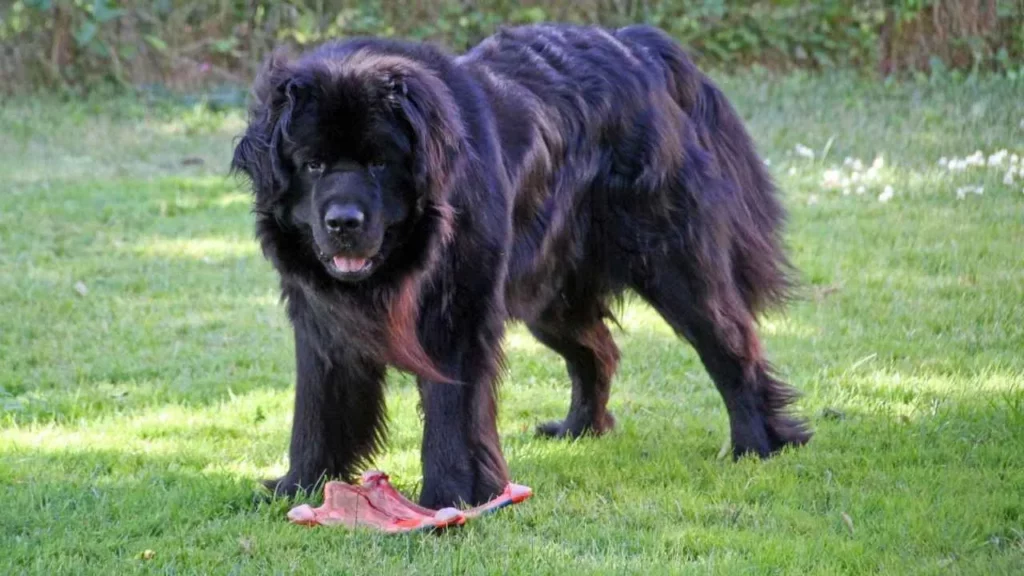
✅ Despite their massive size, Newfies are incredibly gentle and friendly. They’re basically living marshmallows with paws—sweet, squishy, and always there when you need comfort.
✅ They’ll let toddlers climb them like jungle gyms without flinching. Kids dropping Cheerios? Cool. The cat swiping their tail? Totally chill. These dogs are Zen masters.
✅ They’re not barky watchdogs, but they do notice things. Think: “I see the mailman… but do we really need to make this a thing?”
✅ Training is a breeze if you’re kind and consistent. Just don’t yell—they have delicate feelings and might sulk like a heartbroken poet.
✅ They’re the type to save your life during a kayaking mishap, then sit beside you like “Did I do good, hooman?”
Saint Bernard:
Saint Bernards are like your clumsy but loveable uncle who shows up with hot chocolate, a warm blanket, and accidentally knocks over your lamp trying to give you a hug.
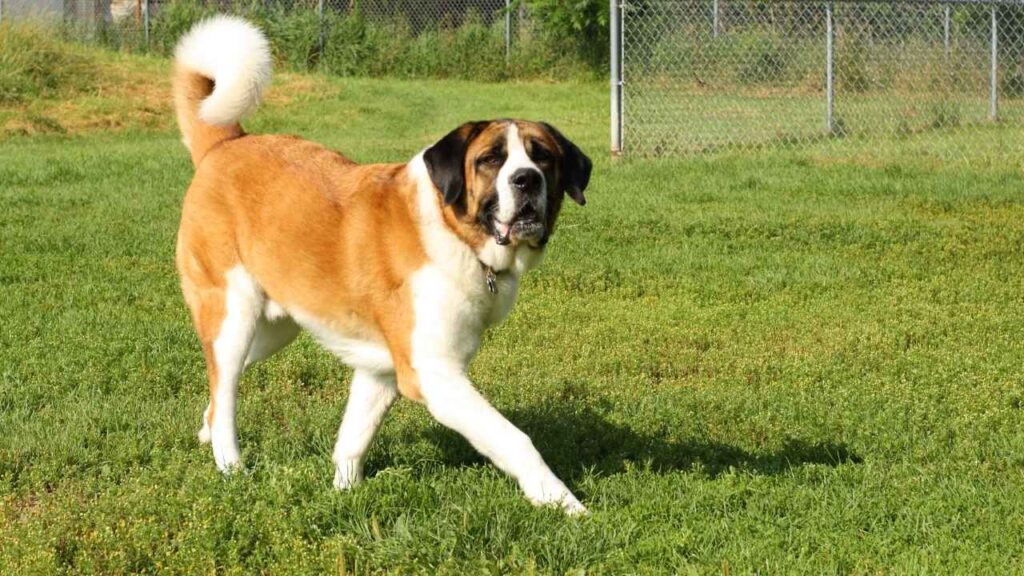
✅ Saints are emotional sponges and affectionate. They’ll soak up your sadness, roll over for a belly rub, and drool out empathy all over your shoes.
✅ They’re hilarious without trying. Watching a Saint Bernard “zoomie” around the backyard is like seeing a fluffy freight train lose its brakes—but they’re always having fun!
✅ They’re more “I will sit on this stranger until they leave” than “attack dog.” But yes, they’ll bark if something’s off.
✅ Training requires patience and snacks. Lots of snacks. They might look at you like, “Why should I sit? My entire existence is majestic.”
Legend says they carried barrels of brandy to stranded travelers. These days? Expect slobbery kisses and maybe your sandwich going missing.
Shedding Levels
Let’s get this out of the way: neither of these breeds is low-shedding. If you were hoping for a tidy, low-maintenance coat… oof. Let’s just say you’ll be finding fur in places you didn’t even know existed.
Newfoundland:
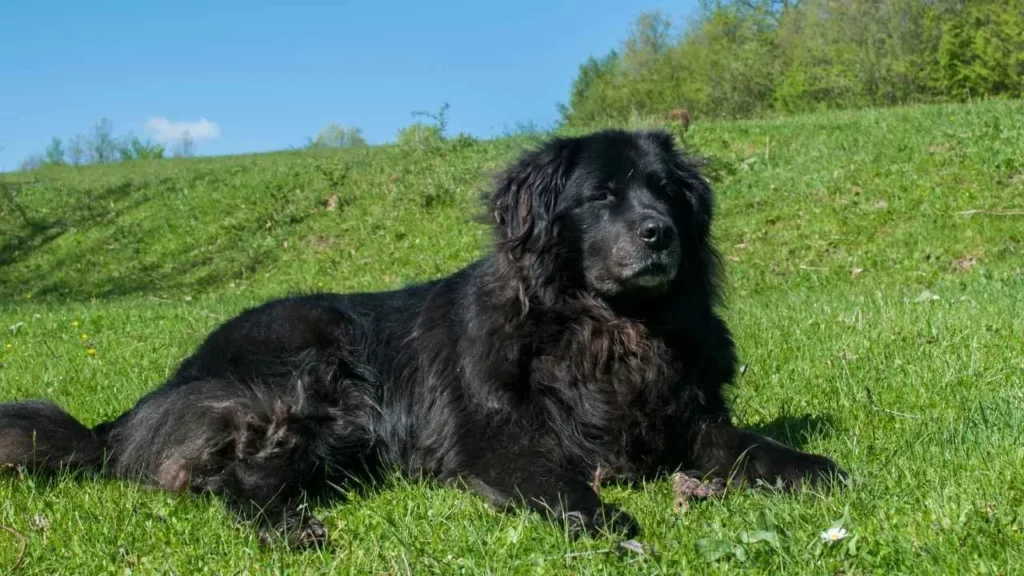
Level: Heavy. They “blow” their coats seasonally — and by “blow,” we mean they could probably stuff an entire mattress with it.
Texture: Long, dense, and floaty — ideal for coating every surface in your house.
Allergy Potential: Not great for allergy sufferers. Their coat + dander = sneeze symphony.
Pro Tip: Weekly brushing is a must, daily during shedding season. Also, invest in a lint roller… or five.
Saint Bernard:
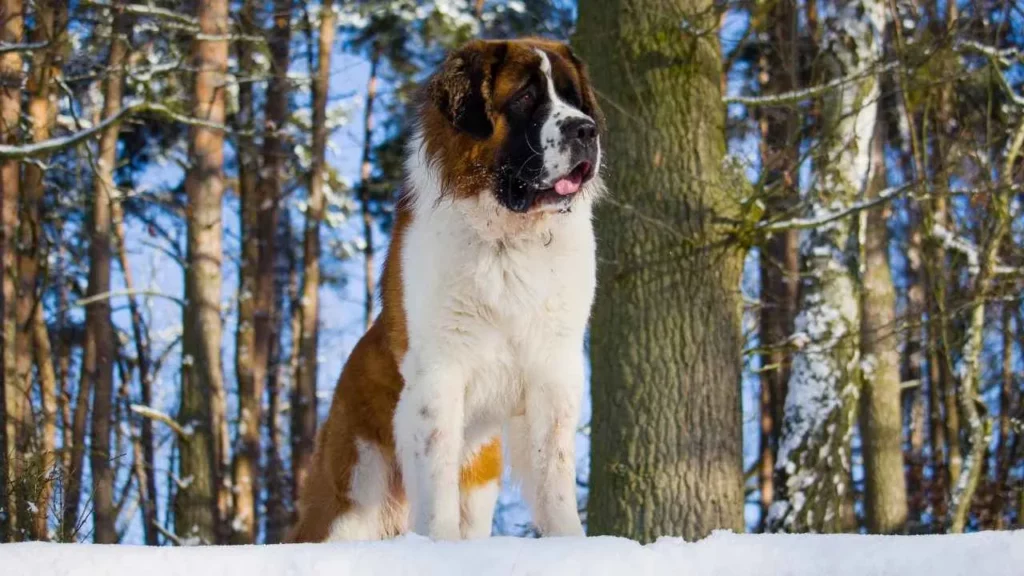
Level: Also heavy. Whether short-haired or long-haired, there’s no escaping the fuzz.
Texture: Thicker and more dense — not as floaty as Newfies, but just as clingy to your clothes.
Allergy Potential: Similarly high. Combine with drool for the full Saint Bernard experience.
Pro Tip: Regular brushing helps, and you’ll still find fur in your coffee mug. Accept your fluffy fate.
Common Health Issues
Let’s face it—when you’re dealing with dogs that weigh more than your average high school freshman, some health problems come with the package. These lovable giants are loyal to the end, but their sheer size puts a little extra pressure on their joints, hearts, and overall health
Newfoundland:
Newfoundland dogs are known for their kind, incredibly patient nature—but they’re not invincible. They have a few health quirks that every prospective Newfie parent should be aware of.
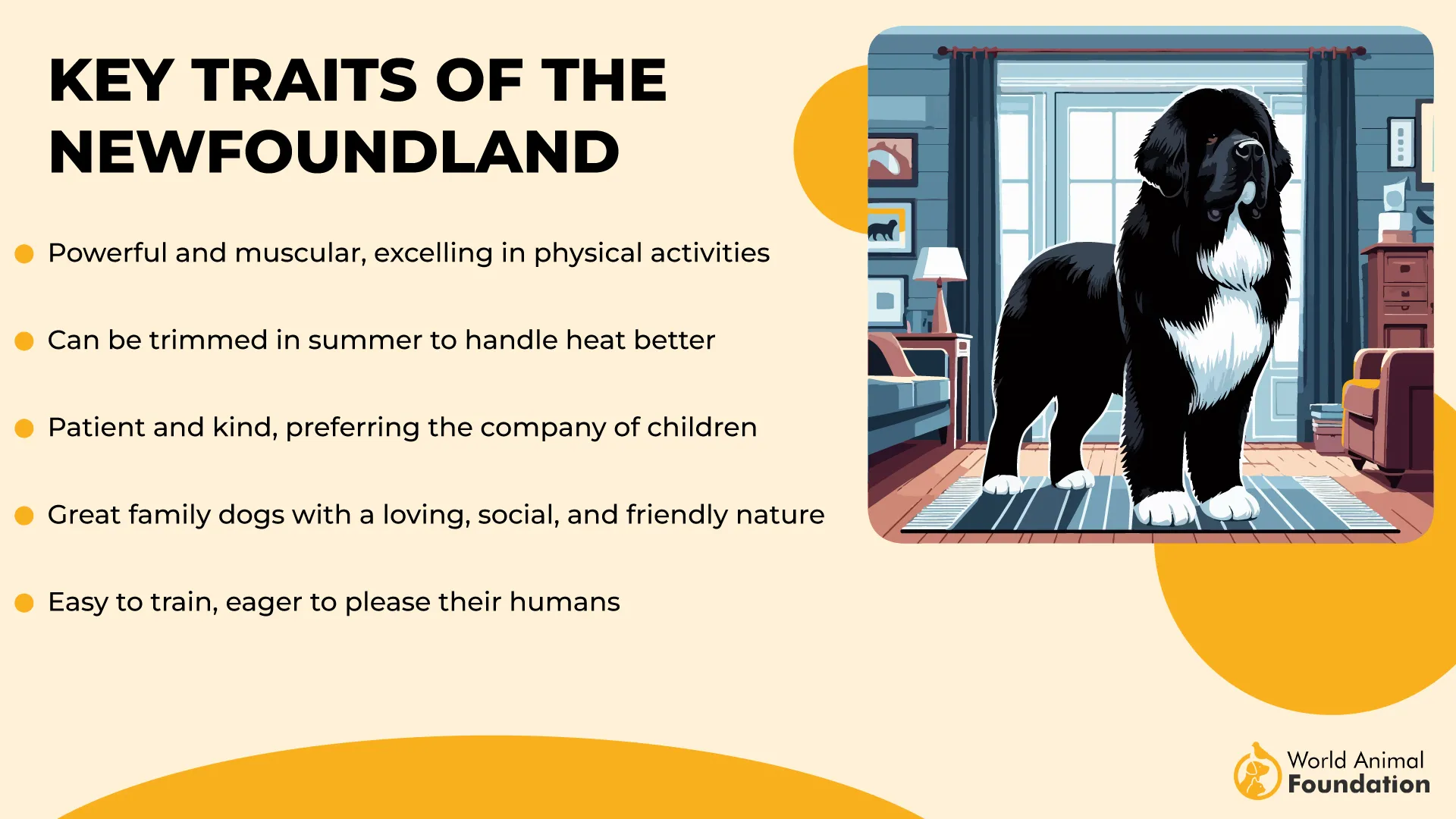
Common Health Concerns:
Hip and Elbow Dysplasia: Their massive size can take a toll on their joints. Think: giant teddy bear, fragile hips.
Subvalvular Aortic Stenosis (SAS): A serious heart condition fairly common in the breed. It’s like a bad plumbing issue in a giant love machine.
Cystinuria: A hereditary kidney condition that leads to bladder stones—uncomfortable and, if untreated, dangerous.
Bloat (Gastric Dilatation-Volvulus): A scary, sudden condition that’s life-threatening if not treated immediately. Think of it as a balloon party gone horribly wrong.
Obesity: Newfs love food almost as much as they love you. Too many treats = big problems.
Pro Tip: Annual checkups, a healthy diet, and avoiding rough play on slippery floors can help your Newfie stay fluffin’ fantastic.
Saint Bernard:
Saint Bernards were bred to rescue people… but ironically, they sometimes need rescuing themselves when it comes to health.

Common Health Concerns:
Hip and Elbow Dysplasia: Like Newfoundlands, those giant bones need extra care.
Dilated Cardiomyopathy: A serious heart condition common in large breeds.
Entropion: A condition where the eyelid rolls inward. Eye drops, anyone?
Bloat: Yep, same risk here. Big chest = big bloat potential.
Heat Sensitivity: Saints were built for snowstorms, not sunbathing. They can overheat faster than your car’s dashboard in August.
Pro Tip: Keep them cool, watch their weight, and schedule regular vet visits to keep them happy and huggable.
Life Expectancy
Unfortunately, large breeds tend to have shorter lifespans, but they sure know how to pack a lifetime of love into those years.
|
Breed |
Average Lifespan |
|---|---|
|
Newfoundland |
8–10 years |
|
Saint Bernard |
8–10 years |
What can help extend their life?
A nutritious diet (hold the pizza crusts)
Low-impact daily exercise
Early screening for genetic conditions
Avoiding obesity (no matter how good they are at begging)
Though they may not stay as long as smaller breeds, both these dogs leave lifelong pawprints on your heart — and maybe a few dents in your furniture.
Conclusion
When comparing Newfoundland vs Saint Bernard, these two breeds may seem alike due to their imposing size and good-natured personalities, but they are actually two completely different breeds with several key differences. Both are giant dogs, originally bred as working dogs and guardians, and make excellent companions for pet parents and dog owners. The average Newfoundland tends to enjoy water and is slightly more eager to please, while the St. Bernard can have a stubborn streak, requiring consistent obedience training and positive reinforcement during training sessions.
Early socialization is essential for both breeds to get along with other dogs and other animals. Their similar temperaments make them friendly, but their exercise needs and grooming routines differ, especially with loose hair. These large dogs are specifically bred for different tasks, leading to main differences in behavior and adaptability. Due to potential health issues and separation anxiety, pet insurance is a smart choice. In the end, whether you choose a Newfoundland dog or a St Bernard, both dog breeds can grow into a loyal, intelligent, and loving pup.


